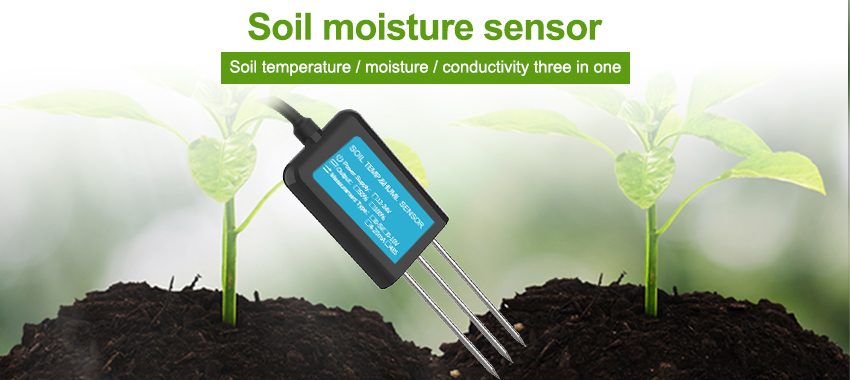Precision farming has become a buzzword in the agricultural sector, with farmers adopting various technologies to optimize crop production while reducing waste and environmental impact. One of the key components of precision farming is soil sensing technology, which enables farmers to monitor soil conditions and adjust management practices accordingly. Soil sensors provide real-time data on soil moisture, temperature, nutrient levels, pH, and other parameters that affect plant growth and health. The availability of precise and timely information allows farmers to make informed decisions about irrigation, fertilizer application, and other management practices. In this article, we will explore how soil sensors revolutionize precision farming, delving into their benefits, challenges, and future directions.

Benefits of Soil Sensors in Precision Farming: a. Improved Resource Efficiency:
Soil sensors promote resource-efficient farming by optimizing inputs such as water, fertilizers, and energy. By monitoring soil moisture, nutrient levels, and other parameters, farmers can provide crops with the right amount of resources at the right time. This approach minimizes waste, reduces costs, and conserves natural resources.
b. Precision Agriculture: Soil sensors enable precision agriculture, where agricultural practices are tailored to specific soil conditions. By providing real-time data on soil parameters, soil sensors allow farmers to make informed decisions about irrigation, fertilization, and other management practices. Precision agriculture reduces resource wastage, enhances crop quality and yield, and minimizes environmental impacts.
c. Timely Interventions:
Soil sensors provide immediate feedback on soil conditions, allowing farmers to take timely interventions when necessary. For example, if soil moisture levels are low, farmers can initiate irrigation promptly to prevent crop stress. Timely interventions lead to improved crop health, reduced losses, and increased productivity.
d. Data-Driven Decision Making:
Soil sensor data facilitates data-driven decision making in agriculture. By analyzing historical data and trends, farmers can make evidence-based choices regarding crop selection, rotation, and management practices. Data-driven decisions minimize uncertainties, increase efficiency, and optimize outcomes.
e. Environmental Stewardship:
Soil sensors support sustainable and environmentally friendly farming practices. By enabling precise nutrient management, irrigation scheduling, and soil conservation strategies, soil sensors help reduce nutrient runoff, water pollution, and soil erosion. This fosters long-term soil health, biodiversity conservation, and environmental stewardship.
Types of Soil Sensor Data:
Soil sensors can measure various parameters that influence plant growth and soil health. The data collected by soil sensors can be broadly categorized into the following types:
a. Soil Moisture:
Soil moisture sensors measure the amount of water present in the soil. This data helps farmers determine when and how much to irrigate, avoiding under or over-watering. Soil moisture information is crucial for efficient water management, preventing water stress in plants, and reducing water wastage.
b. Soil Temperature:
Soil temperature sensors provide real-time data on soil temperature at different depths. Soil temperature affects biological activity, nutrient availability, and seed germination. Monitoring soil temperature helps farmers optimize planting schedules, manage soil-borne diseases, and improve crop growth.
c. Soil pH:
Soil pH sensors measure the acidity or alkalinity of the soil. Soil pH influences nutrient availability, microbial activity, and plant uptake of essential elements. Monitoring soil pH allows farmers to adjust pH levels through appropriate amendments, ensuring optimal nutrient uptake by crops.

d. Nutrient Levels:
Soil sensors can measure the concentration of various nutrients in the soil, including nitrogen, phosphorus, potassium, and micronutrients. This data helps farmers assess nutrient deficiencies or excesses, enabling precise fertilizer application and minimizing nutrient losses.
e. Electrical Conductivity:
Electrical conductivity sensors measure the ability of the soil to conduct an electrical current. This parameter is related to soil salinity and nutrient availability. Monitoring electrical conductivity helps farmers manage salt-affected soils, prevent crop damage, and optimize nutrient management strategies.
f. Organic Matter Content:
Soil sensors can estimate the organic matter content in the soil, which is an important indicator of soil fertility and carbon sequestration potential. Monitoring organic matter levels helps farmers implement practices that enhance soil health, such as cover cropping, crop residue management, and organic amendments.
